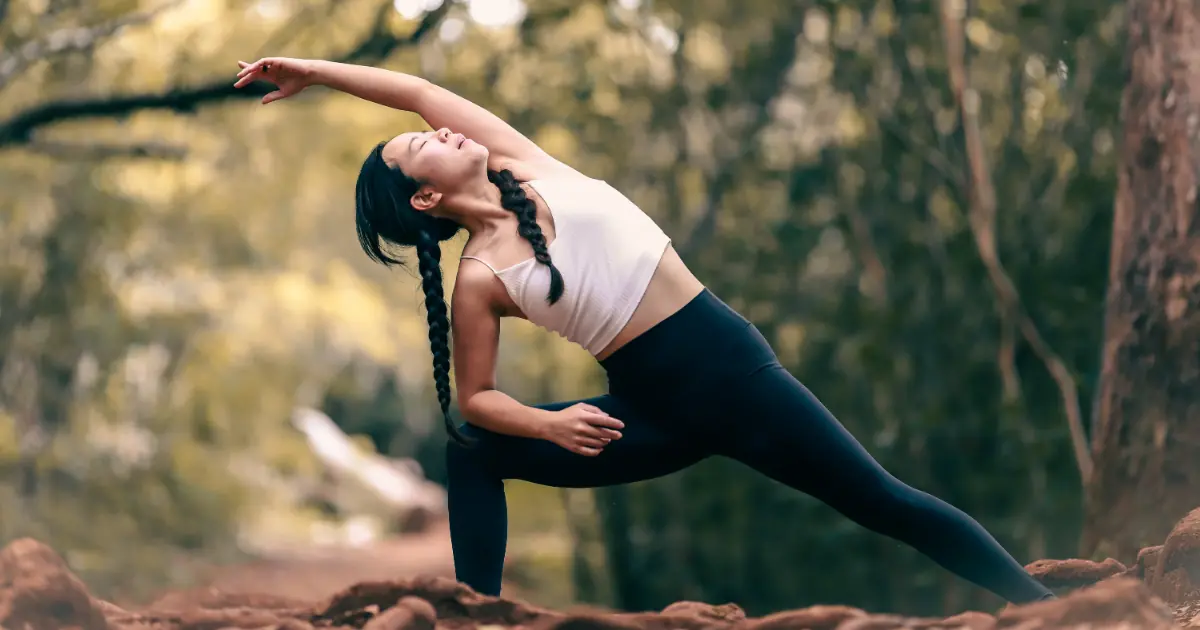Yoga, often misunderstood as merely a series of stretching exercises, is a holistic practice with ancient roots. On the other hand, stretching is a general physical activity to improve flexibility, muscle health, and athletic performance.
When people find out I’m a yoga teacher, I frequently hear a typical response: “Wow, Yoga? I can’t even touch my toes!” For some reason, identifying as a yogi and being super flexible have become synonymous in mainstream culture.
So is yoga stretching — or are they two separate exercises? Where do the different types of activities intersect?
This blog aims to dispel misconceptions about yoga and stretching by shedding light on their origins and purpose. For example, while there are similarities between the two practices, they have distinct objectives and methods.
The reason this distinction matters? It changes how you view each practice entirely. Stay tuned as we delve deeper into understanding the relationship between yoga and stretching exercises and how you can use both to improve your workout routine and overall well-being.
Contents
- 1 Distinguishing Between Yoga and Traditional Stretching
- 2 The Comprehensive Benefits of Yoga and Stretching
- 3 Required Skills, Abilities, and Equipment for Yoga
- 4 Body Capabilities through Yoga Asanas
- 5 Assessing Your Ability Level for Yoga
- 6 Choosing Between Yoga or Stretching
- 7 Final Thoughts on Yoga vs Stretching
- 8 Here are some Yoga related Magazines that can help you through your Yoga Journey
Distinguishing Between Yoga and Traditional Stretching
Physical Movements Comparison
Yoga and traditional stretching, at first glance, seem like siblings. Both involve bending, twisting, and elongating your body. But look closer, and you’ll see they’re more like cousins. Both share the goal of increased flexibility yet achieve results differently.
Traditional yoga styles are a mix of static stretches and dynamic movements. In certain yoga styles like Hatha, your body holds a posture for several breaths. When holding a pose, I like to instruct my students to use their breath to enhance their range of stretching, using inhales to create softness and space and exhales to deepen the stretch.
An excellent example of dynamic stretching in Vinyasa yoga is the Sun Salutation. In this sequence of yoga poses paired with breath, you stretch and lengthen critical areas of the body, such as the hamstrings and spine.
On the flip side, traditional stretching is mainly about static stretches. It’s like reaching down to touch your toes and holding that pose.
Exploring the Mental Component
Here’s where yoga takes a different path: it isn’t just about physical flexibility. Yoga expands your mind and positively affects your mental focus. There is a term ‘super brain yoga’ for a reason. It’s a mental game too. It is so detailed that it even comes with special breathing instructions.
In yoga, you’re encouraged to focus on your breath and be present in the moment. The attention required to maintain the connection between your breath and movements is as much about flexing your mind as it is about flexing your muscles.
Casual stretching doesn’t have this mental component. It’s more about loosening up tight muscles, focusing solely on the physical aspect of the activity.
Considering the Goals of Each Practice
The goals of these two activities highlight their differences, too.
Yoga aims for overall wellness — physical and mental health improvements are targeted here, as well as spiritual development. Regular practice can help reduce stress, calm the nervous system, improve balance, increase strength – the list goes on!
Traditional stretching has a narrower focus. Its primary purpose is to support other types of physical training, for example, improving flexibility and warming up or cooling down muscles before or after exercise.
Assessing Time Requirements
Finally, let’s compare the typical recommendations for time spent during each yoga practice or stretching session.
A typical yoga class lasts anywhere from 45 minutes to an hour (sometimes even longer), depending on your teacher or studio schedule. Each class includes time for meditation, various poses (asanas), and relaxation – it’s pretty comprehensive!
In contrast, traditional stretching sessions are usually short – often done as part of a warm-up for specific muscle groups or cool-down routines in workouts and to reduce soreness after a strength training session.
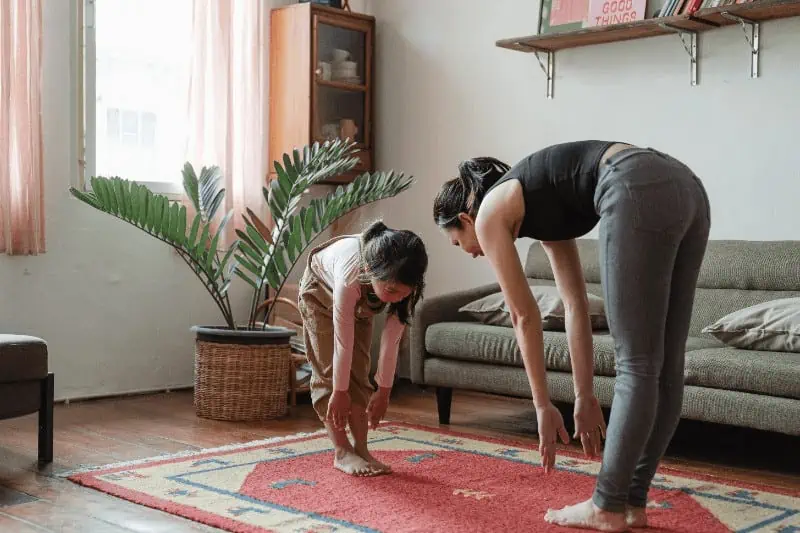
The Comprehensive Benefits of Yoga and Stretching
Physical Perks Galore
Yoga is more than just a few stretches. It’s a full-range workout that covers everything from your toes to the top of your head. It’s safe to say that one of its most well-known benefits is increased flexibility for your whole body.
So, if touching your toes is your personal goal, yoga can help! However, many people overlook the importance of well-rounded flexibility in maintaining balance, mobility, and correct spinal posture.
And let’s not forget about strength: flexibility and strength are two sides of the same mobility coin. Flexibility without strength can strain the joints, while the reverse may limit the range of motion.
Many different types of yoga provide strength and stretching exercises, making it a versatile practice and an excellent complement to many other strength training exercises.
Required Skills, Abilities, and Equipment for Yoga
Basic Skills for Beginners
If you are looking for a casual cool-down stretch after a run, chances are you can manage the process independently.
By contrast, yoga is a more complex practice that benefits from personal instruction via an online program you can follow at home or by attending yoga classes in person. Beginners need to learn proper alignment and how to adapt each yoga posture to their body.
A bonus of attending yoga classes is the personal insight yoga teachers often share during classes. Every instructor develops their style, providing a more unique experience than a self-directed stretching session.
Body Capabilities through Yoga Asanas
Boosting Body Abilities with Asanas
Yoga is not just about stretching. It’s a complete fitness routine that boosts your body’s capabilities. Each asana has a specific focus and targets specific muscle groups.
- Downward Dog pose strengthens your upper body while lengthening your hamstrings.
- Warrior poses work on your lower body strength and balance.
- Triangle pose stretches and strengthens the thighs and hips while improving flexibility in the spine and hamstrings.
When you put several of these poses together, the benefits increase ten-fold. For example, a Vinyasa sequence like the Sun Salutation engages multiple muscles simultaneously — from your core to your legs to your arms — making it an excellent full-body workout.
Raising Body Awareness with Asanas
Did you know that regular asana practice can significantly improve your body awareness? Over time, you become more attuned to how you move, sit, or stand throughout the day.
Things you didn’t know about Asanas
- Asanas are the physical postures practiced in yoga. They are designed to improve strength, balance, and flexibility. Each asana targets specific body parts, promoting better health and well-being.
- There are hundreds of different asanas, each with its benefits and challenges. A few of the most well-known include Downward-Facing Dog, Warrior, and Lotus Pose.
- Asanas are not just about physical exercise. They are also intended to promote concentration and meditation. The physical postures are often used as a form of moving meditation, helping to quiet the mind and promote inner peace.
- Practicing asanas can have numerous health benefits. Regular practice can help reduce stress, improve mental clarity, increase energy and circulation, and improve overall fitness levels. Yoga can also help manage chronic conditions such as back pain, arthritis, and anxiety.
- Asanas should be practiced with care and attention to avoid injury. It’s essential to listen to your body and not push beyond your limits. If a pose feels uncomfortable or painful, adjusting or stopping is important. Yoga teachers trained in a qualified program can offer guidance to ensure correct alignment and technique.
- Breathing techniques are just as important as each asana you practice — mindful breath awareness is vital in developing the mind-body connection during yoga practice!
This increased body awareness helps correct posture issues over time and reduces the risk of injuries during workouts or daily activities.
Use Specific Asanas to Increase Flexibility
Yoga is known for its ability to increase flexibility. Classic postures like Forward Bend or Pigeon Pose stretch out tight muscles in common problem areas such as the back, hips, and hamstrings. Over time, these specific poses can help improve mobility in these areas and make everyday movements easier.
Another significant difference between simple stretching and yoga is that stretching serves the single-pointed focus of becoming more flexible. It is a secondary practice that complements a strength training session or post-run cool down.
On the other hand, yoga will undoubtedly provide you with a good stretch, but its benefits permeate many different areas of your life off of the mat. It’s a holistic approach to physical movement, including fitness activities and everyday mobility.
And remember, like any other fitness routine, consistency is critical in yoga. The more regularly you practice, the better results you’ll see. So roll out that mat and get started with your yoga journey today!
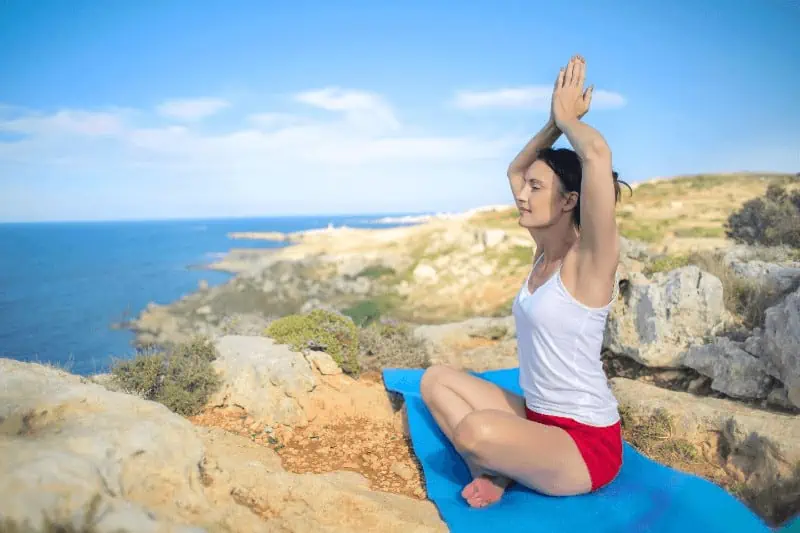
Assessing Your Ability Level for Yoga
Know Your Fitness Level
Before you jump into the world of yoga, it’s essential to know where you stand fitness-wise. It’s like driving a car without knowing how much gas is left in the tank.
Your current fitness level plays a significant role in determining which yoga asanas you can safely practice. If you start doing complex poses right off the bat, you’re setting yourself up for injury.
Self-Assessment Techniques
You don’t need fancy equipment or tests to determine your fitness level. Start by asking yourself some simple questions:
- Can I bend over to touch my toes without discomfort in my lower back?
- How long can I hold a plank?
- Can I do push-ups without straining myself?
The answers will give you an idea about your flexibility and strength, which are direct benefits of traditional yoga.
Another technique is to try some basic yoga poses. If they feel comfortable and easy, that’s a good sign. But if they make you sweat bullets or cause discomfort, you might consider hitting the gym for strength training before getting too ambitious on your yoga mat.

WARRIOR MAT by Alo Yoga
Your mat supports you literally and figuratively — in the studio, during sweaty sequences and healing ideas, and in the world, where yoga’s grounding effects help you live a life of purpose.
Seek Professional Guidance
If your self-assessment leaves you unsure, don’t hesitate to seek professional guidance. A certified yoga instructor can evaluate your ability and suggest suitable asanas for your level.
Remember, there’s no shame in asking for help. I believe I speak for most yoga teachers when I say we love sharing our knowledge with new students! Getting professional advice could save you from injuries and ensure your yoga journey starts on the right foot (or pose!).
Start with Beginner-Friendly Asanas
Once you’ve assessed your fitness level, it’s time to get down on the floor (literally!). Start with beginner-friendly asanas like Mountain Pose (Tadasana) or Child’s Pose (Balasana). These poses may seem simple but lay a solid foundation for more complex asanas.
Gradually Progress
As with anything in life, progress in yoga comes with time and practice. Don’t rush into advanced asanas just because they look cool on Instagram.
Take your time, listen to your body, and gradually introduce more complex poses into your routine. Remember, the journey is just as important as the destination in yoga.
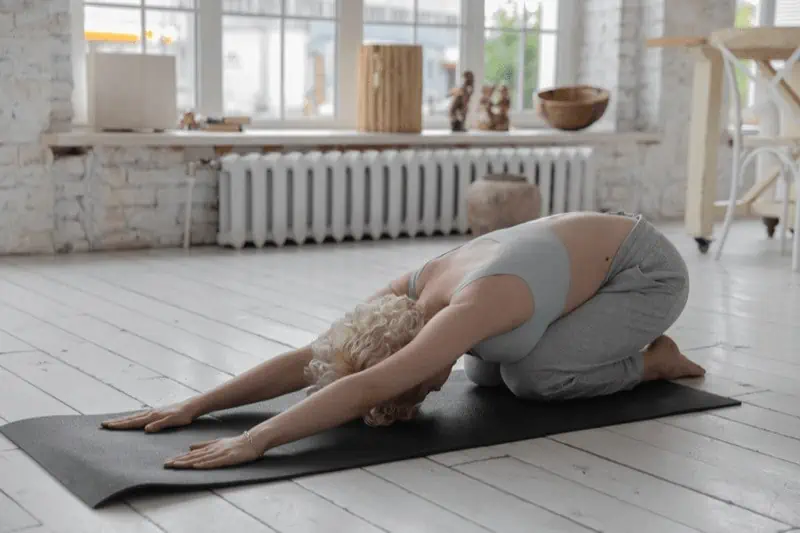
Choosing Between Yoga or Stretching
Factors Influencing Your Choice
Deciding between yoga and stretching can be a tough nut to crack. It’s about which one you like more and what fits your fitness goals, schedule, and personal preferences.
For instance, simple stretching exercises might be your go-to if you’re trying to increase your flexibility or recover from an injury. They take less time – you can knock out a solid stretch session in ten minutes flat.
On the other hand, if you’re looking for something that will help reduce stress levels, improve mental focus, and benefit your physical body, yoga could be up your alley. A typical yoga session may last anywhere from 45 minutes to an hour and a half.
Final Thoughts on Yoga vs Stretching
So, you’ve made it through the nitty-gritty of yoga and stretching. It’s clear that both have their perks, but yoga seems to take the cake with its holistic approach. It’s not just about bending and twisting; it’s a lifestyle that promotes mental clarity and emotional balance.
Is yoga stretching? Sure. But it’s also much more! Yoga might be your next best move if you’re up for a challenge and ready to step out of your usual workout comfort zone.
But hey, don’t just take our word for it! Try both approaches for yourself and see what best supports your goals. Remember, there’s no one-size-fits-all solution here. You have to find what works for you and stick with it. So go ahead, roll out that mat, and start exploring!
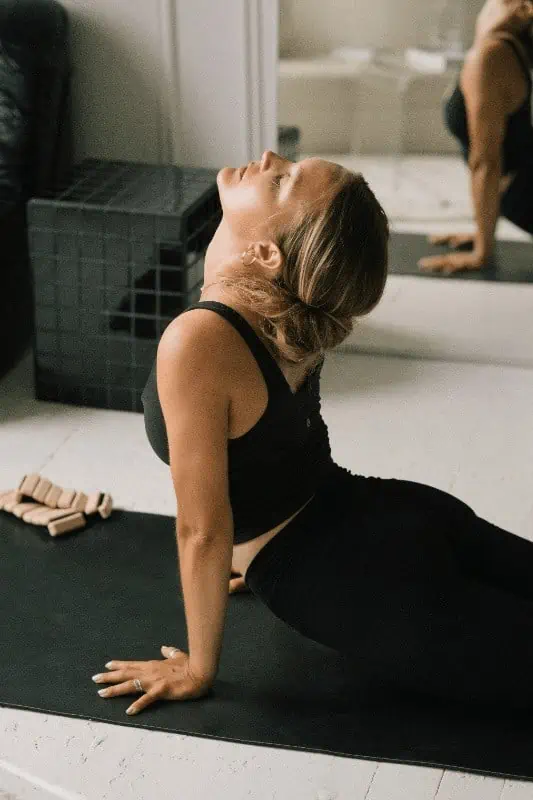
- “Yoga Journal” – perhaps one of the most well-known yoga magazines. It offers a wealth of information on different yoga poses, including those focused on stretching.
- “Yoga International” – This magazine provides a global perspective on yoga, with plenty of articles on yoga stretching and flexibility.
- “Om Yoga & Lifestyle” – A UK-based magazine that covers all aspects of yoga, including a focus on yoga stretching.
- “Yoga Digest” – This magazine offers a holistic approach to yoga, with plenty of articles on yoga stretching and how it benefits overall health and wellbeing.
- “Yoga Magazine” – An international publication that offers in-depth articles on yoga stretching and its benefits.
- “Mantra Wellness Magazine” – While not exclusively a yoga magazine, Mantra Wellness often features articles on yoga stretching and its role in overall wellness.
- “LA YOGA” – This Los Angeles-based magazine often features articles on yoga stretching, focusing on how it can enhance your yoga practice.
- “Asana Journal” – This international yoga journal strongly focuses on the physical aspects of yoga, including stretching.
Remember always to check the content of these magazines to ensure they match your specific interests and needs in yoga stretching.
FAQs
Can I practice yoga if I’m not flexible?
Absolutely! Flexibility is not a prerequisite for practicing yoga. As you continue practicing, you’ll naturally become more flexible.
Is yoga safe during pregnancy?
Prenatal yoga can be very beneficial during pregnancy, but always consult your doctor before starting any new exercise regimen while pregnant.
How often should I do yoga?
For beginners, practicing two to three times per week is usually sufficient to start seeing improvements in flexibility and stress levels.
Do I need special equipment for yoga?
Not necessarily! A simple non-slip mat (like these from Alo Yoga) is all you need to get started with basic poses.
Is it better to do yoga or stretching in the morning?
Both are great ways to wake up your body in the morning! Choose whichever feels best for you based on your available time.


